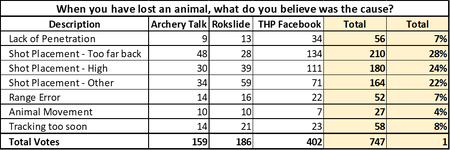Beendare
"DADDY"
That pretty much sums it up for me too- grinI've also got my own experiences which suggest it's much less about weight and more about arrow flight, a sharp broadhead, and shot placement. Wow. Who would have guessed?
Well at least the influencers like Ashby and RF have come around closer to more main stream thinking Lately.
It is worth remembering the Snake Oil these guys used to peddle, in Ashbys case it was many years ago. Many of you guys probably won’t remember but Ashby used to claim a very high FOC arrow flies further….and had a “30% FOC threshold”- Laughable
RF used to claim tuning was not necessary admitting he couldn’t tune a bow….and he had a silly chart of Manly arrows stating that the mid 400g arrows millions have had great success with is some Whimpy thing.
Its great that we have some common sense info out there like this vid to counter that crazy stuff.

